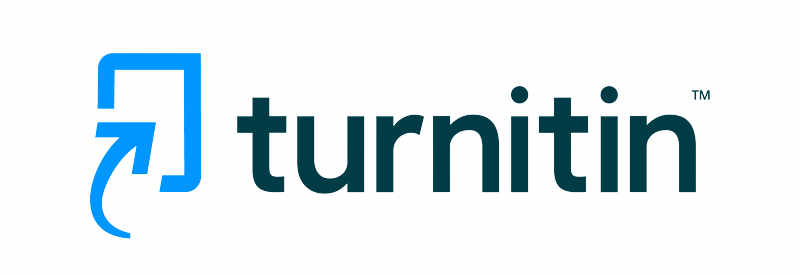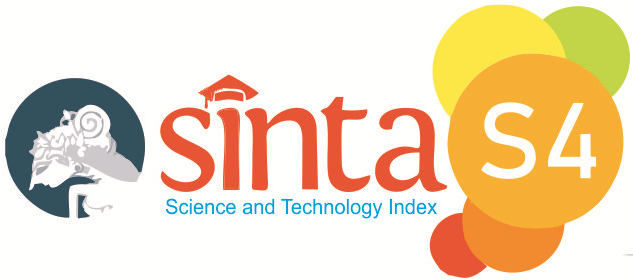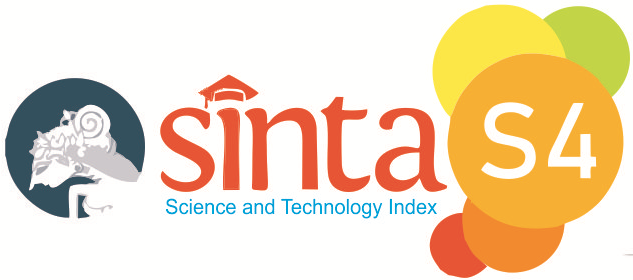Ability adversity quotient and mathematical literacy using the cooperative, integrated learning model, reading, and composition (CIRC)
DOI:
https://doi.org/10.32332/c7szwz90Keywords:
CIRC, Adversity quotient, mathematical literacyAbstract
Previous research has implemented the adversity quotient and mathematical literacy, but none has combined it with the CIRC learning model. This research aims to determine the influence of the CIRC learning model on students' adversity quotient and mathematical literacy abilities—the research population at SMP Amal Bakti in South Lampung. The quasi-experimental research design uses random samples. Data instruments were collected through mathematical literacy tests and adversity quotient questionnaires. The prerequisite tests are the normality test and homogeneity test, and the hypothesis test uses the Multivariate Analysis of Variance (Manova) test with a significance level of 0.05. In the results of the analysis, it was found that there is an influence on adversity quotient and mathematical literacy abilities using the Cooperative, Integrated, Reading, and Composition (CIRC) learning model.
References
Ade Sriwahyuni , “ Implementation of Problem Based Learning Model to Improve Junior High School Students’ Mathematical Literacy Skills,” Didactical Mathematics 1, no. 2 (2019): 1–7, https://doi.org/10.31949/dmj.v1i2.1291.
Addini Fahira and Uun Zulfiana, “The Contribution of Adversity Quotient to Student Engagement in Blended Learning at SMAN x Singosari,” Cognicia 10, no. 1 (2022): 34–41, https://doi.org/10.22219/cognicia.v10i1.20078.
Ahmad Din Harefa, Sadiana Lase, and Yulisman Zega, “The Relationship between Mathematics Anxiety and Mathematical Literacy Ability to Students’ Learning Outcomes,” Educativo: Jurnal Pendidikan 2, no. 1 (2023): 144–51, https://doi.org/10.56248/educativo.v2i1.96.
Ainun Fajriah et al., “Effectiveness of Implementing Accelerated Learning Cycle Learning Model with Visualization Approach on Mathematical Literacy Ability Reviewed from Mathematical Habits of Mind,” Jurnal Cendekia: Jurnal Pendidikan Matematika 5, no. 2 (2021): 1626–39, https://doi.org/10.31004/cendekia.v5i2.634.
Allinda Hamidah, “Analysis of Students’ Mathematical Literacy Ability Reviewed from Learning Style,” Jurnal Cendekia 10, no. 02 (2018): 157–62, https://doi.org/10.37850/cendekia.v10i02.70.
Depriwana Rahmi, Muhammad Alde Putra, and Annisah Kurniati, “Analysis of Mathematical Problem Solving Ability Based on Adversity Quotient (AQ) of High School Students,” Suska Journal of Mathematics Education 7, no. 2 (2021): 85, https://doi.org/10.24014/sjme.v7i2.13306.
Desintha Paxia Mayesty et al., “The Effect of Adversity Quotient on Students’ Mathematics Learning Achievement,” Journal of Educational and Cultural Studies 2, no. 1 (2023): 125–31.
Fahmi et al., “Edagogia Journal of Educational Sciences,” 2 17, no. 03 (2020): 229–38.
Fildzatun Nabilah and Wardono, “Mathematical Literacy Skills with Higher Order Thinking in SPUR-Nuance CIRC Learning Assisted by Google Classroom,” PRISMA, Proceedings of the 4th National Mathematics Seminar (2021): 200–207, https://journal.unnes.ac.id/sju/index.php/prisma/article/view/44963.
Filian Yunita Sari, “The Ability of Junior High School Students to Think Creatively in Mathematics Reviewed from the Adversity Quotient,” Plusminus: Journal of Mathematics Education 2, no. 3 (2022): 357–68, https://doi.org/10.31980/plusminus.v2i3.2172.
Hendry Sugianto, Amin Suyitno, and Tri Sri Noor Asih, “The Effect of Discovery Learning Method Using E-Learning on MTs Mathematical Literacy Skills,” JNPM (National Journal of Mathematics Education) 6, no. 1 (2022): 145, https://doi.org/10.33603/jnpm.v6i1.6264.
Hulaikah, M., Degeng, INS, Sulton, S., & Murwani, FD (2020). The Effect of Experiential Learning and Adversity Quotient on Problem Solving Ability. International Journal of Instruction, 13(1), 869–884. https://doi.org/10.29333/iji.2020.13156a
I Komang Sesara Ariyana and I Nengah Suastika, “CIRC (Cooperative Integrated Reading And Composition) Learning Model as One of the Mathematics Learning Strategies in Elementary Schools,” Scientific Journal of Batanghari Jambi University 22, no. 1 (2022): 203, https://doi.org/10.33087/jiubj.v22i1.2016.
Indah Resti, Ayuni Suri, and Selva Larissa, “The Effect of the Missouri Mathematics Project (Mmp) Learning Model on Critical Mathematical Thinking Skills Reviewed from Mathematical Disposition" 5, no. 2 (2024): 224–31.
Komarudin Komarudin et al., “Analysis of Mathematical Creative Thinking Ability: Impact of Open Ended Model and Adversity Quotient (AQ),” AKSIOMA: Journal of Mathematics Education Study Program 10, no. 2 (2021): 550, https://doi.org/10.24127/ajpm.v10i2.3241.
Lena, Mai Sri, Netriwati , and N. (2019). Methods Research ( First ). CV. IRDH
Lily Ratnasari and Asma Wardah Islamiyyah, “Online Learning: Adversity Quotient and Self Directed Learning in Students,” Journal of Social Humanities and Education 2, no. 2 (2023): 35–42, https://doi.org/10.56127/jushpen.v2i2.741.
Naili Fajriati and Budi Murtiyasa, “Students’ Mathematical Literacy Skills Using Interactive Multimedia,” Jurnal Cendekia: Jurnal Pendidikan Matematika 7, no. 1 (2023): 945–57, https://doi.org/10.31004/cendekia.v7i1.2219.
Nurul Huda and Damar Damar, “Association of Adversity Quotient with Mathematics Learning Outcomes of Junior High School Students ,” Journal of Instructional Mathematics 2, no. 1 (2021): 10–20, https://doi.org/10.37640/jim.v2i1.892.
Nofiana Ika Rahmawati, “Utilization of ICT in Improving Mathematical Literacy Skills,” Prisma 1 (2018): 381, https://journal.unnes.ac.id/sju/index.php/prisma/article/view/19606/9529.
Puspaningtyas, ND, & Ulfa, M. (2020). Numeration Literacy-Based Mathematics Training in SMA IT Fitrah Insani. Jpmmp, 4(2), 137–140.
Prastika Istiqomah, Kamid Kamid, and Muhammad Haris Effendi Hasibuan, “The Effect of Realistic Mathematics Education Model on Mathematical Literacy Ability Reviewed from Students’ Self Efficacy,” AKSIOMA: Journal of Mathematics Education Study Program 10, no. 4 (2021): 2775, https://doi.org/10.24127/ajpm.v10i4.4334.
Rahmat Hidayat, Atma Murni, and Yenita Roza, “Development of Mathematics Learning Tools Using Problem Based Learning Model to Facilitate Students’ Mathematical Literacy Skills,” Jurnal Cendekia: Jurnal Pendidikan Matematika 5, no. 3 (2021): 3017–27, https://doi.org/10.31004/cendekia.v5i3.373.
Rekma Mustika, “The Relationship Between Self Confidence and Adversity Quotient on Students’ Mathematical Problem Solving Ability,” Journal of Educational Research 18, no. 2 (2018): 220–30, https://doi.org/10.17509/jpp.v18i2.12964.
Risa Utaminingsih and Subanji Subanji, “Analysis of Students’ Mathematical Literacy Skills on Linear Program Material in Online Learning,” ANARGYA: Scientific Journal of Mathematics Education 4, no. 1 (2021): 28–37, https://doi.org/10.24176/anargya.v4i1.5656.
Risna Dwi Lestari and Kiki Nia Sania Effendi, “Analysis of Junior High School Students’ Mathematical Literacy Ability on Planar Shape Material,” Biormatika: Scientific Journal of the Faculty of Teacher Training and Education 8, no. 1 (2022): 63–73, https://doi.org/10.35569/biormatika.v8i1.1221.
Rohana, Yusuf Hartono, and Imam Adhitya Nugraha, “The Effect of Creative Problem Solving Learning Model on High School Students’ Mathematical Literacy Skills,” Journal of Mathematics Education Innovation 3, no. 2 (2021): 169–79.
Saharuddin and Nirmala Dewi, “The Influence of Self-Efficacy and Adversity Quotient on Elementary School Students’ Mathematical Problem Solving Ability” 3, no. 3 (2024): 134–43.
Siti Azizah, “The Influence of Learning Models and Adversity Quotient on Mathematical Connection Ability,” Indonesian Journal of Education 1, no. 3 (2020): 311–37, https://doi.org/10.36418/japendi.v1i3.27.
Titiana Nurjani Nasution, Netriwati Netriwati, and Novian Riskiana Dewi, “The Effect of CIRC Learning Model with MURDER Strategy on Students' Mathematical Connection Ability at SMA Negeri 1
Vika Conie Fatwa, Ari Septian, and Sarah Inayah, “Students’ Mathematical Literacy Skills Through Problem Based Instruction Learning Model,” Mosharafa: Journal of Mathematics Education 8, no. 3 (2019): 389–98, https://doi.org/10.31980/mosharafa.v8i3.535.
Zanirah Permatasari et al., “Analysis of Students’ Mathematical Problem Solving Ability Based on Adversity Quotient (AQ) Level,” Griya Journal of Mathematics Education and Application 2, no. 2 (2022): 437–48, https://doi.org/10.29303/griya.v2i2.162.
Downloads
Published
Issue
Section
License
Copyright (c) 2025 Indah Resti Ayuni Suri, Netriwati Netriwati, Rini Rahmawati

This work is licensed under a Creative Commons Attribution-ShareAlike 4.0 International License.

















